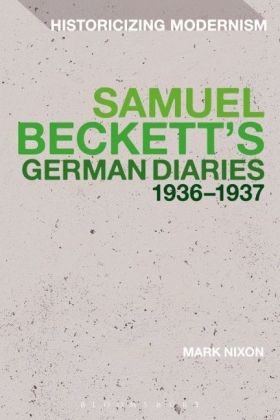Read more
Six diary notebooks kept by Samuel Beckett during his 1936-7 trip through Nazi Germany were discovered in 1989. Samuel Beckett's German Diaries 1936-1937 is the first study to explore the relevance of these diaries to Beckett's development as a writer.
Using the diaries as the central point of focus, Nixon draws on unpublished manuscripts, notebooks, correspondence, reading notes from the 1930s to reflect on both Beckett's creative evolution prior to 1936 and the direction his writing took after his return to Dublin in April 1937. As well as gaining an insight into Beckett's reading of classical German literature, Nixon shows how the pared-down style of writing, the self-examination and the importance of the visual arts that govern Beckett's post-war works traces back to the pages of these notebooks.
By illuminating how Beckett's writing and aesthetics underwent a far-reaching change during the 1930s, Nixon's study is crucial to our understanding of the emergence of Beckett as a radical writer in the post-war years.
List of contents
Acknowledgments List of Abbreviations, Editions Cited and Notes on the Text List of Figures Introduction 1. Beckett's Journey to Germany 1936-1937 2. The German Diaries 3. Psychoanalysis, Quietism and the Literary Waste 4. Beckett reading German Literature 5. Beckett, Nazi Culture and Contemporary German Fiction 6. Playing the Scales of Literature: Beckett's 'Notesnatching' 7. Beckett's 'Journal of a Melancholic' and Other Writing 8. Talking Pictures: Beckett and the Visual Arts 9. Clarifiers and Obscurantists Conclusion: The threshold of words Bibliography Appendix A: Beckett's travel itinerary Appendix B: Illustrations Index
About the author
Mark Nixon is Lecturer in English at the University of Reading, UK, where he is also the Director of the Beckett International Foundation.
Report
One of the great strengths of Nixon's book is his recourse to manuscript materials in the navigation of densely theoretical problems; the use of historicist methods in tackling questions of form and genre proves a formidable critical combination. The Times Literary Supplement

